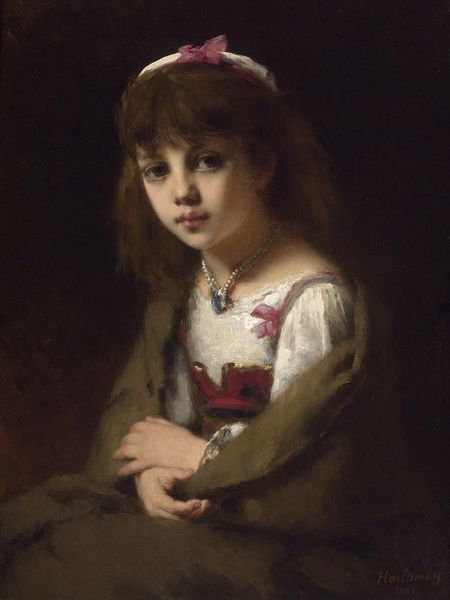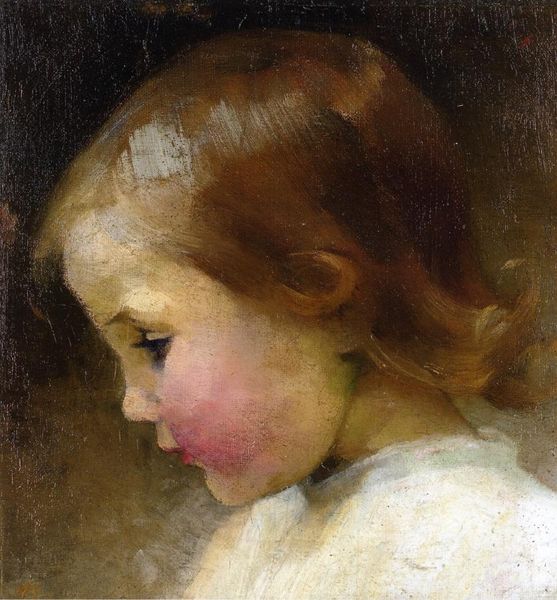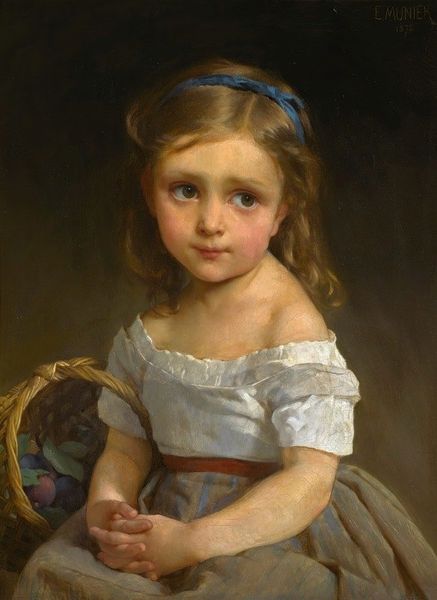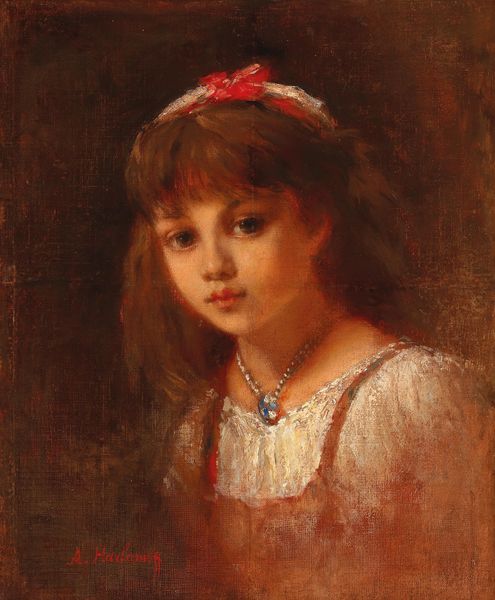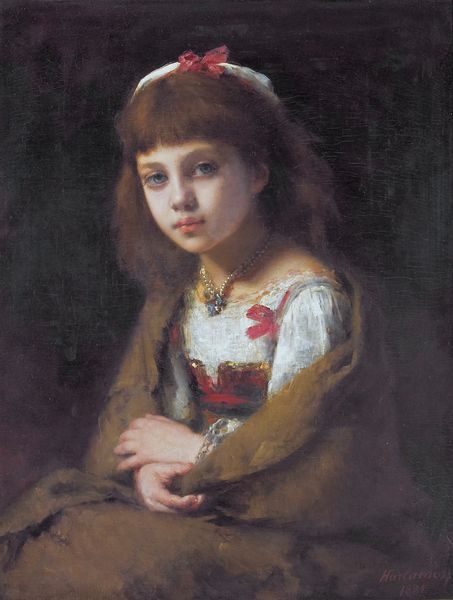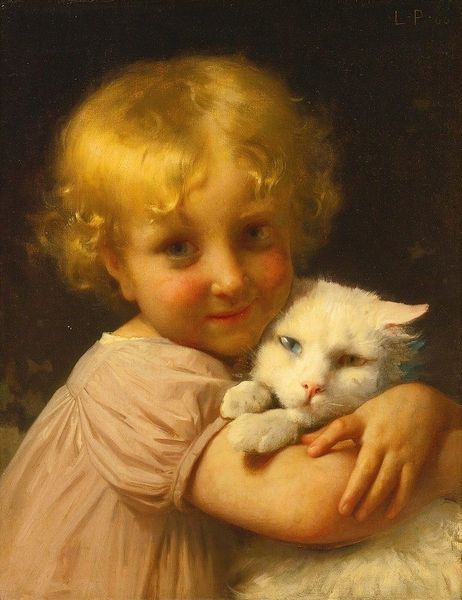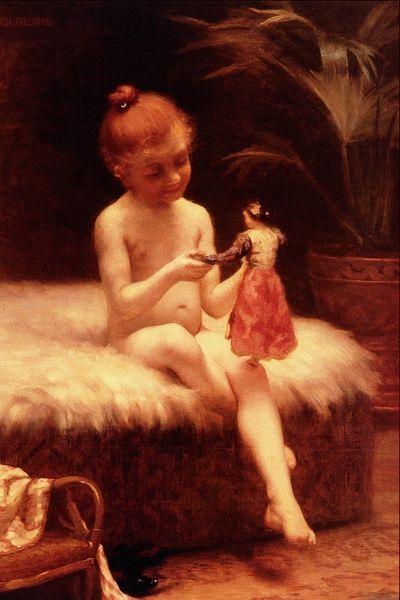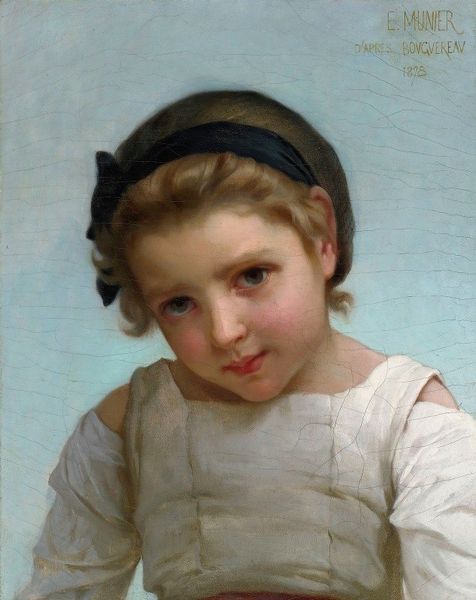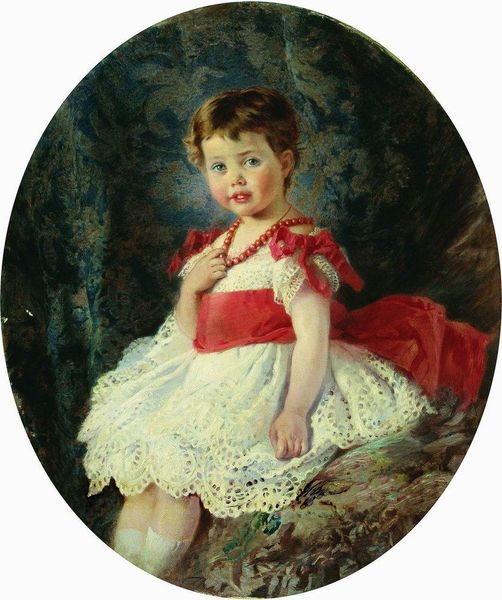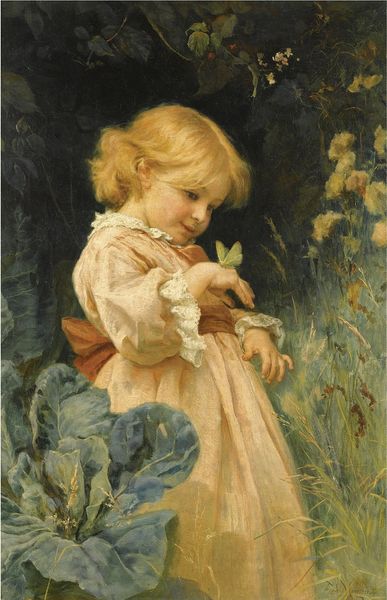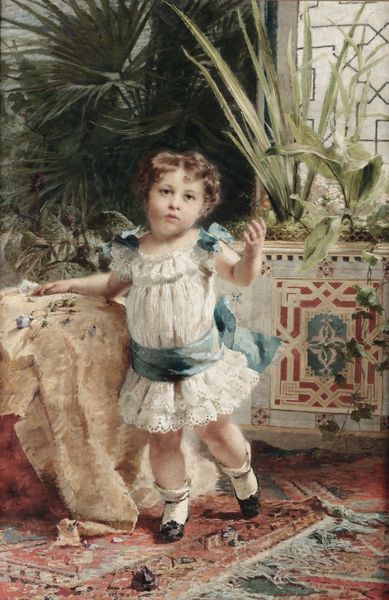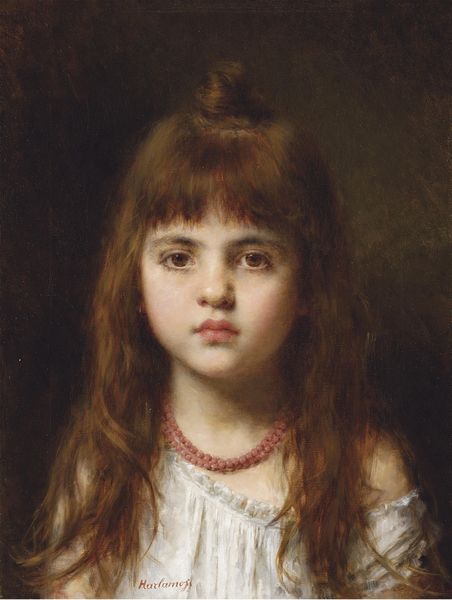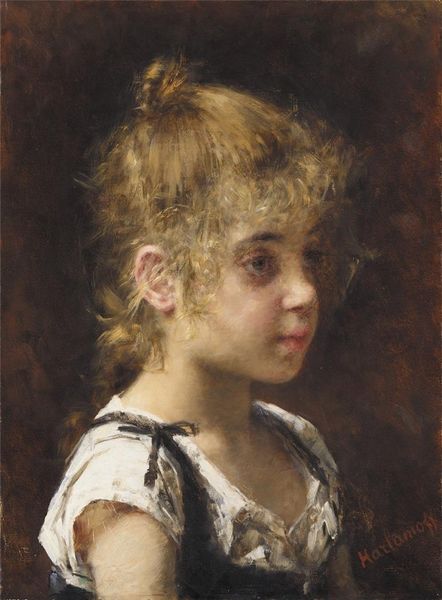
Copyright: Public domain
Editor: Here we have Pierre-Auguste Cot’s painting, "A New Doll", also known as "Little Girl," from 1881, executed in oil paint. There’s a sentimental air about it, with the girl gazing so intently at her doll. What stands out to you? Curator: The doll itself is powerfully symbolic. More than just a toy, it is a stand-in, perhaps a wish for the future. Think about the archetype of the Madonna and Child, its historical weight, and its reflections in secular art. The doll held close, nuzzled against her face, almost absorbs her innocence. How does the girl's expression resonate with you? Editor: There's a solemnity there, almost as if she’s contemplating something serious through the doll. It's more than just affection; it's like a conversation without words. Curator: Precisely. Red, prominently placed, embodies conflicting notions – passion, but also loss. In tandem with her gaze, and her doll – what if this all suggests budding womanhood? Editor: I didn’t think of that. The doll becomes a reflection of the girl's transition, from childhood into something more complex and unknown. Curator: Indeed. This piece invites us to consider childhood’s end and its implications in cultural memory. Does seeing the painting through this symbolic lens change your understanding of it? Editor: Absolutely! Seeing the layers of symbolism transforms it from a simple portrait into a profound meditation on growing up. I’ll never look at a doll the same way again. Curator: Me neither. Cot’s romanticism, filtered through our insights, shows us just how relevant are symbols that we have been long accustomed to, still moving us today.
Comments
No comments
Be the first to comment and join the conversation on the ultimate creative platform.
